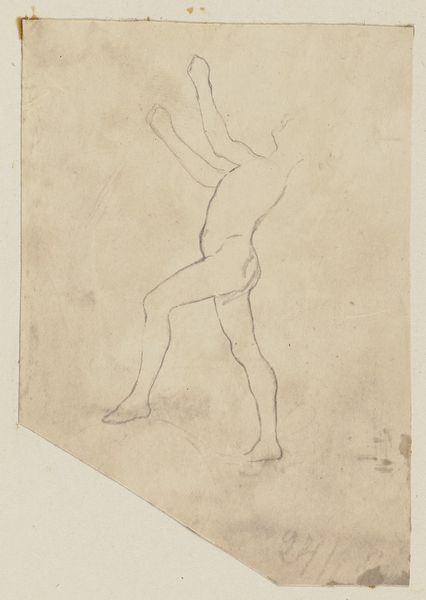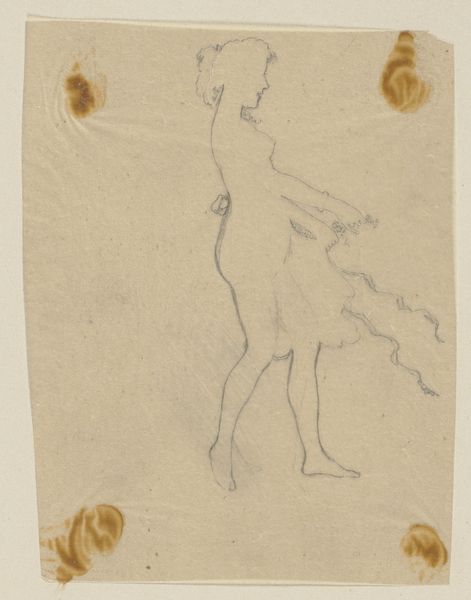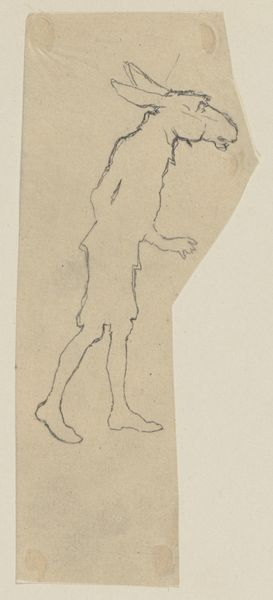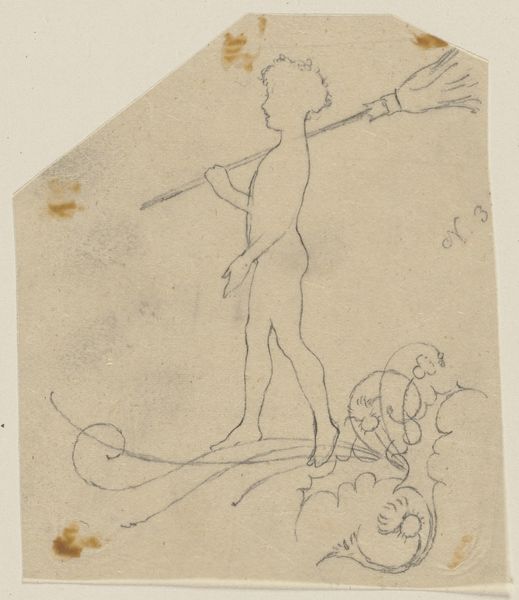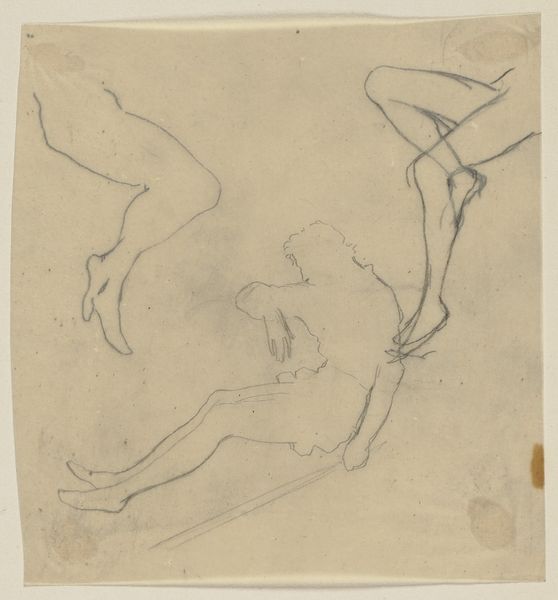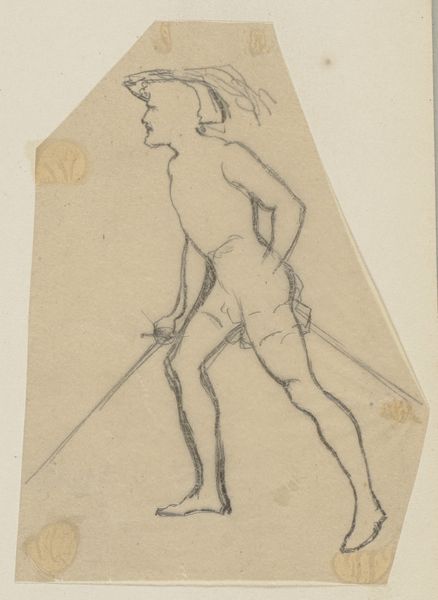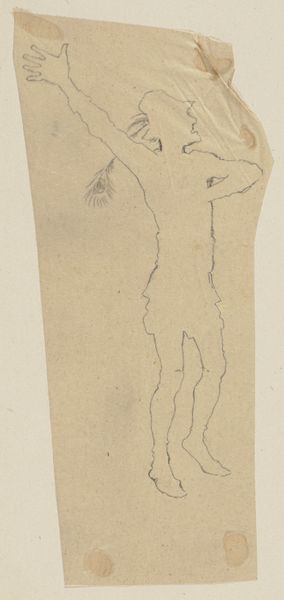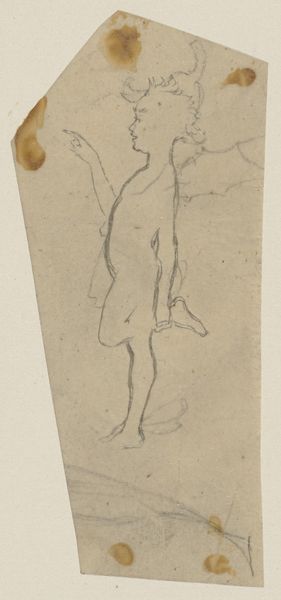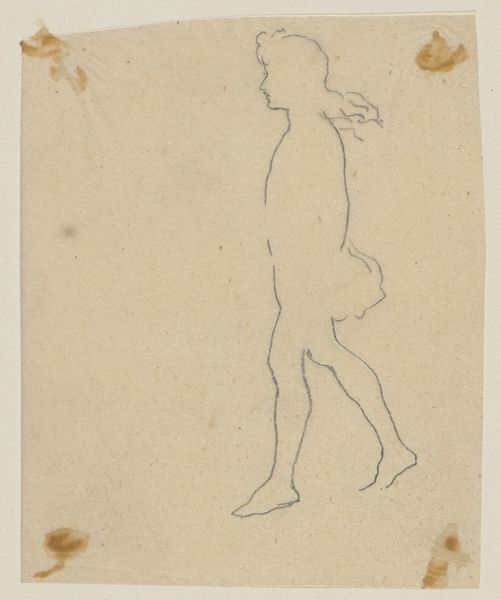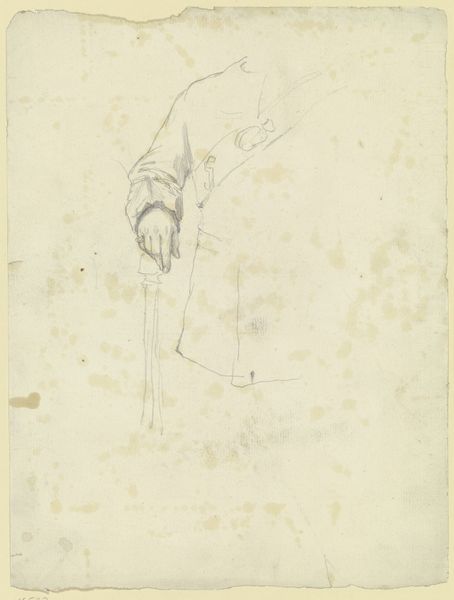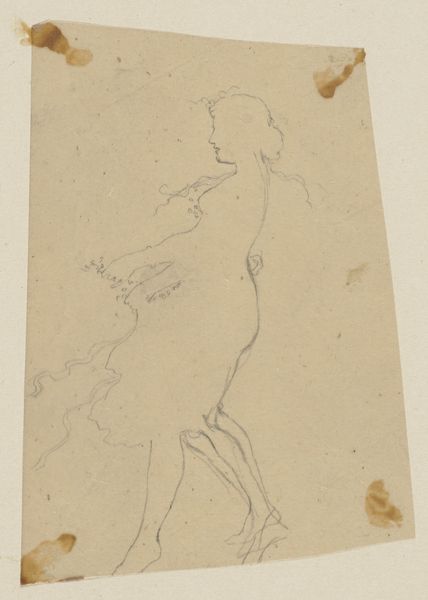
Copyright: Public Domain
Editor: This pencil drawing by Paul Konewka, titled *Puck, weit ausschreitend und mit erhobenen Armen,* was made around 1867-1868 and it's currently held at the Städel Museum. The figure appears so weightless and dynamic; it's fascinating to see such a playful subject rendered with such delicate lines. How would you interpret this work within the artistic and cultural context of its time? Curator: This piece is quite telling of its era, the Romantic period. Puck, a figure from Shakespeare’s *Midsummer Night’s Dream*, enjoyed immense popularity. But why Puck? What made this mischievous sprite so appealing to the 19th-century imagination? Editor: Maybe his connection to nature, and a sort of untamed freedom? The Romantic era was fascinated with nature and the power of individual emotion, wasn't it? Curator: Precisely. Consider the growing industrialization of Europe at this time. Figures like Puck, existing outside societal norms, offered an escape. Also, note the emphasis on line, a hallmark of Romantic drawings meant for intimate viewing rather than public display. It speaks to a different, more personal engagement with art. How do you think the method of display might influence a viewer's perception of Puck? Editor: Displaying it privately would certainly highlight the personal connection to nature and freedom that you described. Seeing it in a museum like this brings a new dimension - understanding how those themes fit within broader social and artistic movements of the 19th century. Curator: Precisely! So we have a tension here: intimate subject meets public consumption, and this tension contributes to a more profound experience. That friction shows how artworks can be interpreted within a wider sociopolitical discourse, as well as individual reflection. Editor: That's a really insightful way to frame it; I'll definitely think about that tension in other works too!
Comments
No comments
Be the first to comment and join the conversation on the ultimate creative platform.
